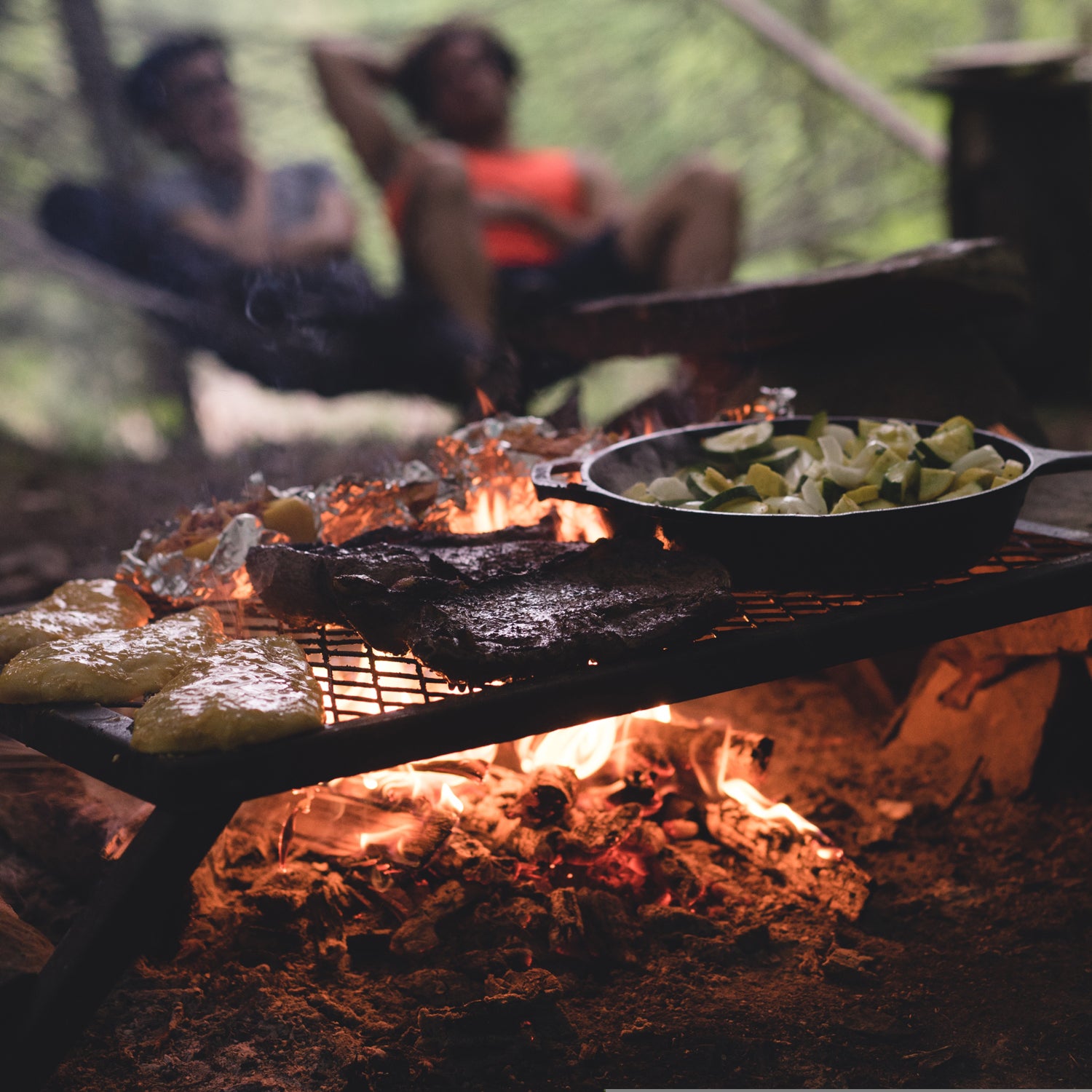It was my friend Lars Alvarez-Roos, co-owner of international outfitter Bio Bio Expeditions, who taught me how to skillfully craft a camp meal. I was working for Bio Bio as a guide, and he put me in charge of grilling a few hundred dollars’ worth of salmon for clients on a river trip. His instructions were simple: “Don’t fuck it up!” Sounds straightforward, but a lot goes into preparing and cooking gourmet meals over an open fire, and Alvarez-Roos has been doing it for 25 years. Here’s his list of campfire cooking equipment to get it right.
Wood
This may sound like a no-brainer, but the exact type of wood matters. As any pro barbecue chef will tell you, the type of logs you burn will impart flavors into the food. If you have the option of bringing your own fuel, go for a hardwood like a cherry or oak, because it’ll burn hotter and cleanly. If you’re foraging for your wood, beware sappy trees like pine. “Pine can create acrid smoke that’ll leave a tarry taste to your meat,” Alvarez-Roos says.
Grate
Your second step is finding a grate to cook meat on or rest a pot over. This is the key piece of gear that elevates a campfire to a camp stove. Before you get your fire started, create a sturdy surface—I like to use three or four similar-size stones—to rest your grate on so you have an even cooking space. “It could be someone’s snow or mud rake out in front of their door—you can borrow that for a weekend,” Alvarez-Roos says. He had one professionally made for Bio Bio with ten-inch legs so he wouldn’t have to rest it over rocks. I used recycled refrigerator shelves for years, but ($14) are reliable, and you can buy whatever size fits your needs.
Hatchet
Feeding your fire the right-size fuel can afford almost the same control at the campsite as turning the dial on your stove in the kitchen. Alvarez-Roos uses a bow saw, but start with a hatchet to split larger wood into the sizes you want. Any hatchet will work, but I’m partial to the ($145), which is pricey but made in America and hasn’t let me down through years of splitting personal kindling.
Welding Gloves
Yes, you’re tough, but take care of yourself when tending a fire. Welding gloves will help you shuffle wood and position steaks while keeping your fingers and arm hair intact. You can get a quality pair, like these ($21), without breaking the bank.
Apron
There’s wisdom in the words “never cook bacon naked.” Alvarez-Roos learned that adage from his river guide mentor. Protection from the heat and grease is key. “I find aprons extremely handy, because you have the pockets to stash things like paper towels, plus rags so you can quickly grab a pot handle,” Alvarez-Roos says. “They also protect you from splatters.” Alvarez-Roos uses whatever apron is available at camp, but if you’re feeling fancy, ($95) is beautiful.
Shovel
Getting the right number of coals in the right place at the right time ensures a thorough cook. And the tool for that job is a shovel. No need to lug around a big one, though. “The ($66) is usually plenty,” Alvarez-Roos says.
Frying Pans
Go light for technique, heavy for power. “Lightweight nonstick pans are really handy when making something as delicate as crepes,” Alvarez-Roos says. But “cast iron is heavier for durability” and better for things like steak or barbecue. I’ve used a ($27) for four years and still trust it to get that perfect sear when throwing it over a fire.
Coffeepot and Kettle
“The classic ceramic-covered metal coffeepot and kettle are both aesthetic and practical,” Alvarez-Roos says. “They match your coffee mugs and plates but are also really handy,” because they’re easier to scrub clean than other metals after blackening over the fire. Try the ($14).
Tongs and Forks
Better to go long for tongs. Same for forks. “Anything over ten inches and you are headed in the right direction,” Alvarez-Roos says. “That way you don’t get cooked when you’re trying to turn the meat.” ($16) and ($11) can flip just about any piece of meat while keeping you safely away from the flames.
Dutch Oven
The humble Dutch oven is one of the greatest cooking inventions of all time. You can place it directly on the coals and steep them around the Dutch oven for a nice even bake for something as homey as cake or lasagna. If you’re going to be schlepping it deep into the woods, though, best to get an aluminum model. “More and more river outfitters have gone in the direction of aluminum, because it’s lighter,” Alvarez Roos says. “They also transfer heat quicker than cast iron but don’t hold it as long, though aluminum is a bit more fragile.” I own a ($47) because I prefer the superior heat retention—it keeps food hot up to a half-hour.


